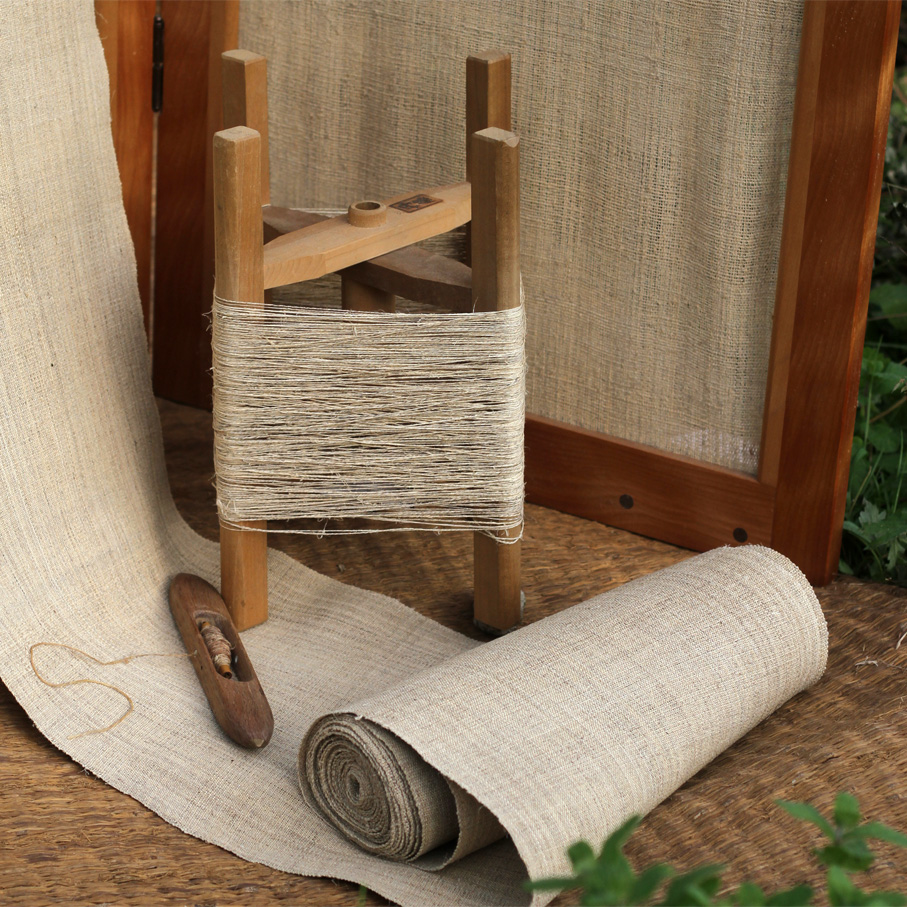
The Association for Preservation of Tango Fuji-ori
Address: c/o Fuji-ori Densho Koryu Kan (Fuji-ori Folk and Communication Center) 850 Aza Kamiseya Miyazu-shi Kyoto-fu 626-0227 Tel.: 0772-27-1547


The Association for Preservation of Tango Fuji-ori
Address: c/o Fuji-ori Densho Koryu Kan (Fuji-ori Folk and Communication Center) 850 Aza Kamiseya Miyazu-shi Kyoto-fu 626-0227 Tel.: 0772-27-1547

Fuji-ori, a textile woven from yarns made from twisted fibers of wisteria bark, was found at an archeological site of the Yayoi period (10th century B.C. to 3rd century A.D.).
It was sung about in Manyo-shu, ancient Japanese poetry in the 7th century: “Fuji-clothes are worn by seafarers making salt in Suma” (vol. 3, no. 413), and “Fuji-clothes are worn by seafarers making salt for the lord” (vol. 12, no. 2971). The poetry shows that Fuji was used for seafarers’ clothes.
Fuji cloth has been made and used throughout Japan, except in Hokkaido and Okinawa. Cotton became widespread during the middle of the Edo era (18th century), when material for garments worn by common people changed from bast fibers such as wisteria, hemp, and ramie to cotton.
Fuji-ori continued in mountain areas because it was not possible to cultivate cotton in cold weather until the Meiji (1868–1912) and Taisho (1912–1926) eras. Nevertheless, its use declined as ways of life changed. In Kamiseya, Shimoseya, and Komakura of Miyazu-shi, which are located in a mountainous area of the Tango peninsula in northern Kyoto, Fuji-ori production has continued until recently.
Fuji cloth has been designated as Nono in those places. Kamiseya is the only place where Fuji-ori has been handed down to the present generation.
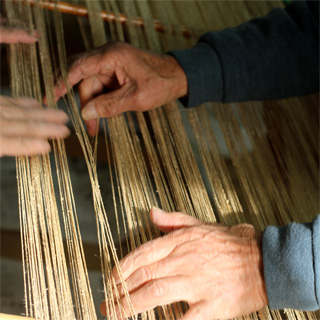
Fuji-ori nearly died out with depopulation in Kamiseya and the rising age of knowledgeable artisans.
A course of Learning Fuji-ori was started in 1985 under organization of Kyoto prefecture Tango Folklore Museum to hand down its techniques directly from elder women to younger artisans at Kamiseya, Miyazu city. The courses were held every year, and Tango Fuji-ori Hozonkai (the Association for the Preservation of Tango Fuji-ori) was founded in 1989 by volunteers who had completed the course. Tango Fuji-ori was designated as an Intangible Folk Cultural Asset by Kyoto Prefecture in 1991 and became a group dedicated to preserving Tango Fuji-ori.
The old building of Seya Elementary School was restored as the Fuji-ori Folk and Community Center in 2010. It is used as a hub center for spreading local culture through Fuji-ori. We organize Fuji-ori courses, which are two-day workshops held seven times a year. In addition, our activities include field trips to the production center of traditional textiles, and an exhibition of Fuji-ori cloth made by members.
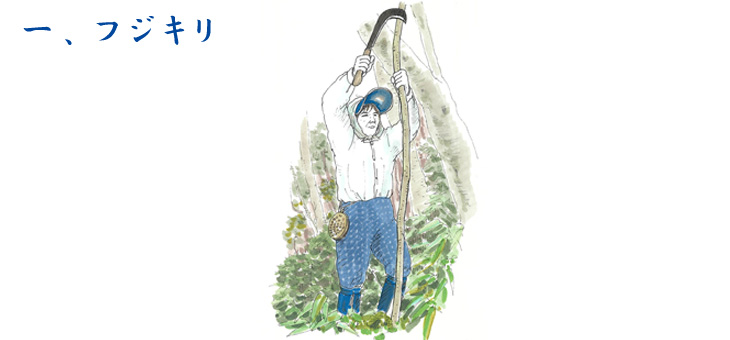
■ Wild wisteria is cut in forests during May through July.
■ Production of a single kimono (36 cm width × 10 m length) requires 70 sticks of 1 hiro (about 180 cm) length of wisteria.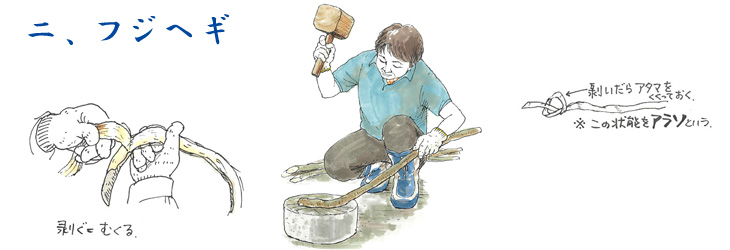
■After hitting the wisteria bark with a wooden mallet, the outer section of the bark is peeled.
■To obtain the inner part of the outer section, which is designated as the nakagawa, the outside skin is peeled away.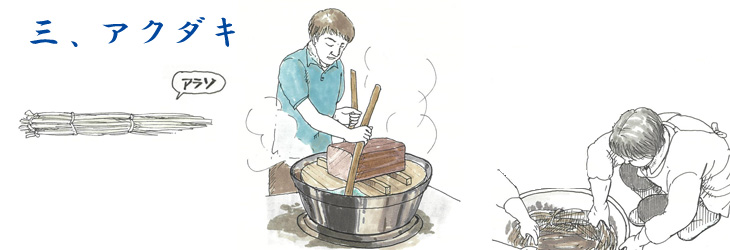
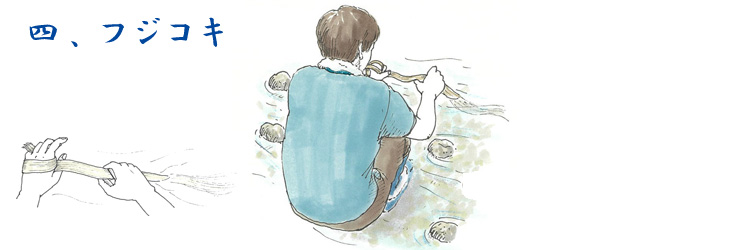
■After the boiled nakagawa is washed in a stream, each strip is scraped with a bamboo tool known as a kobashi. This process removes non-fibrous and extraneous materials.

■ Wisteria fibers are rinsed in water containing rice bran to be softened. They are dried on poles.
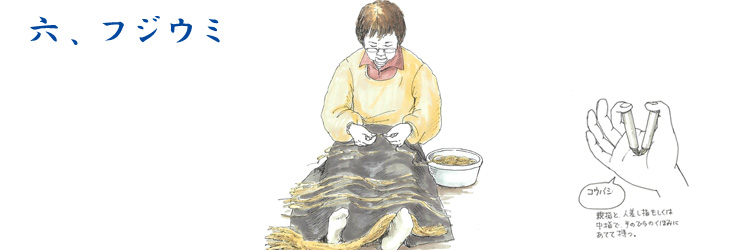
■ Fibers are joined into one continuous length of yarn without ties. This important process requires a good deal of patience.

■Yarn is soaked in hot water to be softened and spun on a wheel. When spun, it is right twisted.
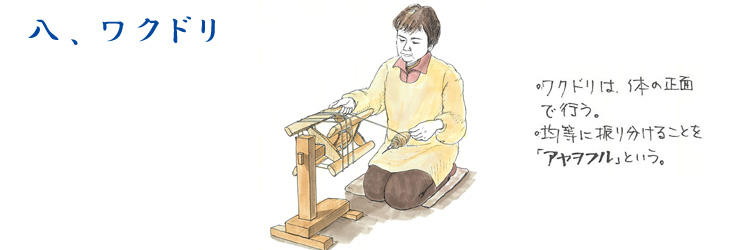
■ Spun yarn is wound from a spindle to a wooden frame.

■Warp yarns wound on 12 frames are prepared for warping. A single kimono requires 300 warps. One obi (sash) requires 260 warps.

■ The warp yarn is fastened tightly to the Omaki (end of the loom), threaded through Soukou (heddles) and Osa (reed), and is fastened to the Oritsuke-nuno (cloth attached to another end of the loom.
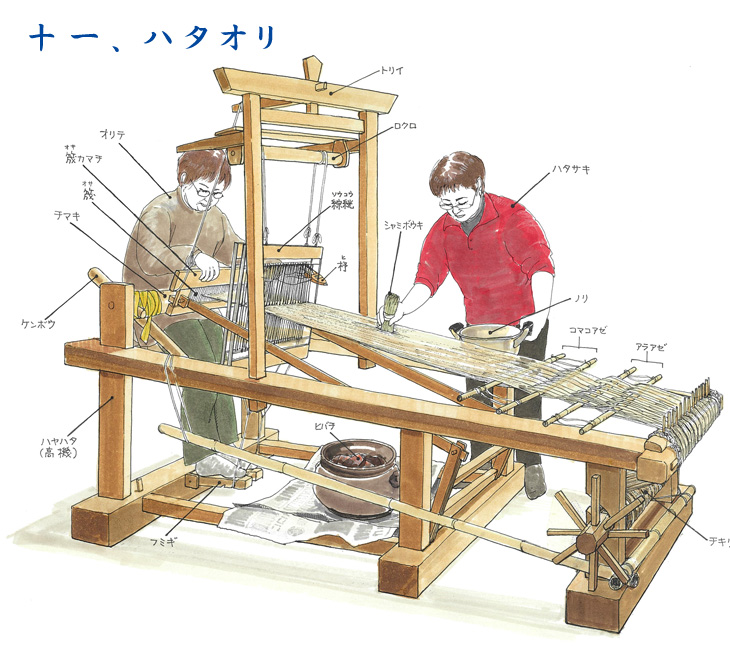
■Warp yarns are starched and dried.
■ Weft yarns are wound on the wheel to bamboo bobbins and are soaked briefly in water. A shuttle with a bobbin of weft yarn is run through between warp yarns. Three to four days are necessary to complete one kimono.The text is taken from the pamphlet of "Tango Fuji-ori " edited by Tango Fuji-ori Hozonkai in 2007.